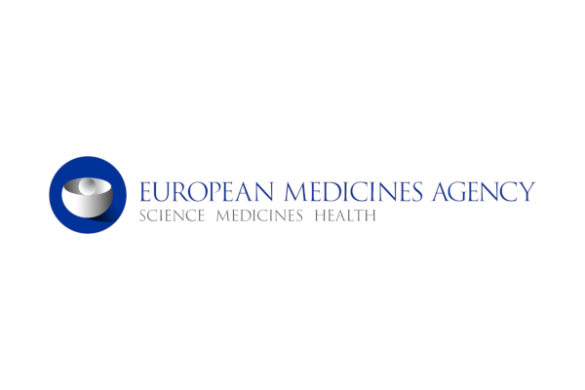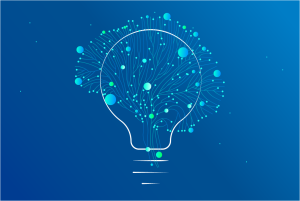By Juliette Dufour
This interesting symposium, titled ‘Coma – what’s new?’ exposed the landscape of coma and disorders of consciousness regarding clinical, biological and therapeutic aspects.
During the first lecture, Dr. Benjamin Rohaut exposed the old and new perspectives in the definition of coma. The first definition of coma from ancient Greek was ‘deep sleep’, then in the 17th century coma became a ‘lack of consciousness’. The actual current definition is a state of unresponsiveness that cannot be aroused to respond appropriately to stimuli (Cf Plum and Posners textbook). The main differential diagnosis is Locked-in syndrome, which is not a disorder of consciousness, but a state in which the patient is de-efferented resulting in a total paralysis. The other differential diagnosis is brain death, an irreversible coma, defined by specific Harvard criteria. Rohaut then exposed the two main axes of coma disorder: wakefulness (activating Reticular Ascending system, ARAS) and awareness (cerebral network of consciousness) with a broad spectrum of state between coma and normal conscious. The first scale developed to assess the coma spectrum was the Glasgow scale (Lancet, 1974), then the FOUR (Full Outline of UnResponsiveness) score was developed especially for UCI. Thus, using these scales, the first vegetative state, defined by wakefulness without awareness was described in 1972. Then the MCS (Minimally Conscious State) was defined in 2004 with the development of a dedicated scale, the Coma Recovery Scale (CRS), which includes visual pursuit especially with the help of a mirror placed in front of the patient.
Dr. Rohaut then discussed the Neuroscientists features of consciousness. In 2006, a case report published in Science described a vegetative patient who responded to a cognitive task in fMRI. This discovery raises the important concept of cognitive-motor dissociation (CMD), which represents 10% of chronic vegetative states. In another study (NEJM, 2019), CMD was assessed with a simpler protocol using EEG and a simple task (“try to move your hand”). Indeed, the authors, using machine learning, were able to classify EEG responses into ‘responders’ and ‘no responders’ to the task. In their cohort, 15% of the patients had a CMD. The definition of CMD is important because patients with CMD have a much better outcome at four weeks and one year.
To conclude, new definitions are now proposed for the spectrum of coma (Edlow et al, Nat Revue Neurol 2021), with the implementation of a third dimension represented by EEG/fMRI.
For the second lecture Prof. David Menon discussed the complex biology of coma. Thrree main questions were answered during the course of his lecture:
1) Are there specific sites which are critical for consciousness? Yes, rostral brainstem, midline thalamic nuclei, anterior insula emerged as particularly important. These results came from studies with fMRI on healthy controls with anaesthesia.
2) Are there systems and connections that subserve consciousness? Two studies proved that white matter connectivity is key in maintaining consciousness. In the first study (Velly et al, Lancet Neurol, 2018), the authors found that white matter DTI FA (measure from diffusion imaging) were highly predictive of clinical outcomes. Similarly, the volume of traumatic axonal injury in the thalamus was also predictive of clinical outcomes. This structural loss of connectivity has functional correlation; indeed, the default of network connectivity reflects the level of consciousness in non-communicative brain-damage patients. But some connections are more important than others; this is the case for the thalamo-cortical, the basal meso-cortical and the dopaminergic circuits.
3) What are the neurochemical substrates that modulate this process? There are multiple substrate candidates for this process and to finish, Menon encouraged participants to read the comprehensive review by Edlow et al (Nature Review, 2021).
For the third lecture, Dr. Verena Rass talked about the variability in the management of comatose patients. Coma is a clinical syndrome resulting from a wide range of etiologies, with no uniformly accepted definition, uncertainty in methods of prognostication and lack of treatment. Rass presented the results of the COME TOGETHER study (Curing Coma Campaign international survey) that included 258 healthcare professionals from 41 countries. The aim was to assess worldwide variability in coma definitions, etiologies, treatment strategies and attitude toward prognosis.
Regarding the definition of coma, there was a high variability in the selection and combination of features (absence of wakefulness, Glasgow<8, no eye opening, no visual pursuit). Therefore, the expert defined a consensus definition, “the absence of sustained spontaneous or stimulus-induced arousal/wakefulness”. All six criteria must be met on clinical examination: 1) no command following, 2) no intelligible speech or recognisable gesture, 3) no volitional movement (reflective movements), 4) no visual pursuit, 5) not due to paralytic agent, sedatives/another neurologic disorder, 6) no evidence of cognitive motor dissociation.
The authors then proposed a new classification, Advanced Classification of Consciousness Endotypes (ACCESS). The objective is to distinguish specific endotypes that are subtypes defined by a distinct biological mechanism that links clinical characteristics with a molecular pathway. These endotypes are more homogeneous and determine more individual outcomes. There are 4 Coma Endotypes: 1) without commensurate structural damage (metabolic, reversible drug), 2) with structural/functional damage that is amenable to replacement or bypass therapy (damage that could potentially be replaced by surrogate brain function), 3) not amenable to repair therapy, 4) mimics endotype (locked-in syndrome). To perform this ACCESS classification, the authors proposed three tiers: tier 1: based on clinical examination and structural neuroimaging; tier 2: add measures of brain function allowing to detect covert consciousness; and tier 3: biological and physiological data to follow evolution of consciousness endotypes over time. Clinical examination must be based on the Coma Recovery Scale Revised (Consensus of experts).
Accurate prognosis of coma patients is challenging due to variability among patients, and the absence of regular follow-up. Longitudinal research is needed to relate clinical presentation to outcomes. Rass presented a longitudinal study published in 2019 in Brain Communication, that included 39 patients with brain injury. They presented a significant improvement but beginning 22 months post-onset injury.
In conclusion, to reduce variability, we have to make precision diagnoses (using endotypes), identify coma patients amenable to individualiaed treatment interventions early, and develop accurate prediction models.
During the final lecture, Dr. Aurore Thibault exposed the landscape of therapies available to restore consciousness. The coma pathophysiology is driven by the inhibition of the Thalamus and the Thalamo-cortical connectivity (in the frontal cortex especially). Therefore, all treatments target regions involved in this mesocircuit model.
First Thibault exposed the available Pharmacological drugs:
- The most popular pharmacologic treatment is Amantadine (NEJM, 2012). In the initial trial, recovery was faster in the Amantadine group during the first two weeks. In another study using PET-CT, patients under Amantadine had more activated brain region (associated areas, motor area).
- Zolpidem is another famous treatment. This treatment is working for a minority of patients, but when it works its effects are impressive. PET-CT was done for ‘responder’ patients to Zolpidem and they found an increase in brain metabolism under Zolpidem (especially meso-cortical). But how to predict the treatment response? fMRI was used in order to compare responders and non-responders in a study. The authors found an increase in thalamocortical connectivity (between Thalamus and fronto-insular areas) in the responder group.
- Apomorphine (dopaminergic agent) was tested in an open-label controlled study. The authors found a better recovery at 12 months with Apomorphine. High density EEG showed a higher connectivity in the alpha band and in PET-CT a massive increase in the whole brain was shown.
Thibault then discussed the non-pharmacological treatment:
- Deep brain stimulation (DBS) is the most famous one. The first case was published in 2007, in which the intralaminar nucleus of the Thalamus was stimulated directly and a spectacular clinical response was obtained.
- tDCS, transcranial direct current stimulation (electrical stimulation). This is a non-invasive stimulation. Using the prefrontal area as the target allows the best results to be obtain. In a multicenter study with 62 patients in MCS with tDCS, the authors found an improvement at three months follow-up.
- Transcranial magnetic stimulation (tMS)
- Protocol special to stimulate Thalamus (deep brain structure) with focal ultrasound pulses
- Vague Nerve Stimulation (transcutaneous auricular, taVNS) or invasive VNS
To conclude, Thibault invited all physicians who work in the field of consciousness to participate in a worldwide project with the aim of creating an online map and designing new clinical trials.












